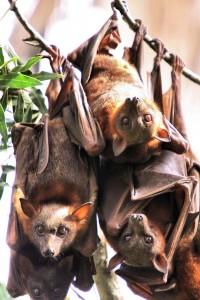

Although the emergence of diseases in wild populations is still not well understood, scientists have gained some new insight in to this process. According to the article “In Wild Animals, Charting the Pathways of Disease” from the New York Times, when the natural habitats of a species is disturbed the resultant stress on their immune systems can lead to a greater chance that diseases could be spread to humans. This is yet another way that the disturbance and loss of wild places may have an impact on human health.
Studies of bat viruses by researchers such as Jonathan H. Epstein of the EcoHealth Alliance and Dr. Plowright of the Center for Infections Disease Dynamics, have indicated that in a natural setting, bats spread viruses to each other over and over. In an undisturbed ecosystem this helps the bats build their immune defenses.
When however, the native wild habitat of a species is replaced with cities and suburbs, the stress on a species immune systems causes higher amounts of the virus to excrete in their waste. In a new environment, the virus-rich bat waste is exposed to new “naïve immune systems” that are unable to fight the virus. This can lead to widespread disease, such as the Hendra virus.
Researchers are learning changes in balance between diseases and the immune system can affect the entire web of life, or an entire ecosystem – including humans. These studies are shedding new light on the effects of human changes to wildlife habitats. Keeping nature intact and practicing sustainable development can aid in conserving not only ecosystem health, but human health as well.
For the full article please go to:
In Wild Animals, Charting the Pathways of Disease
Read more about related topics:
Zoonotic (animal to human) diseases, at the World Health Organization
Organizations:
National Center for Emerging and Zoonotic Infectious Diseases
Photo Courtesy of Mdk572 Wiki-Media Commons